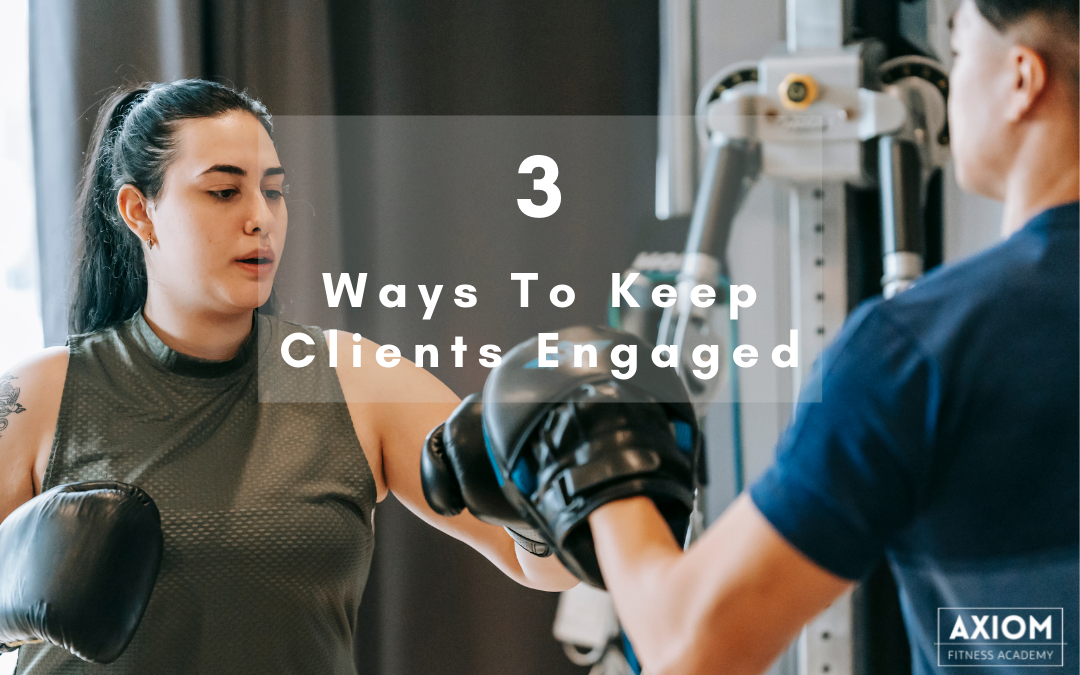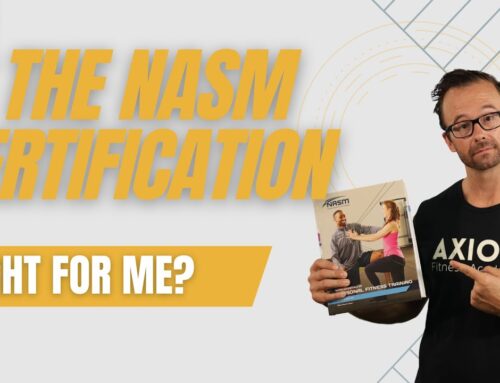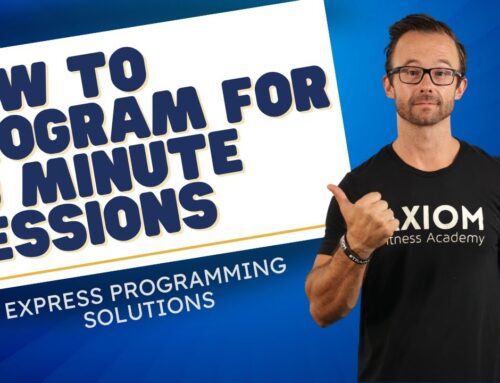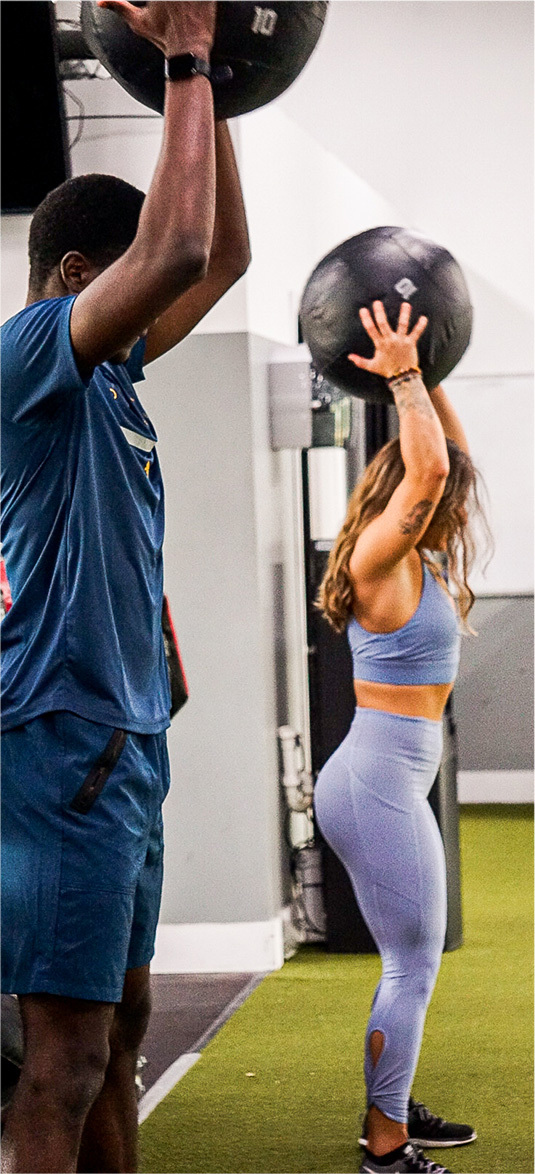
Let’s be real, most clients don’t actually like to work out. That’s probably the reason they hired a trainer in the first place.
However, you have the opportunity to change that feedback loop, and you’ll need to if you want them to stick around for more than a month or two and reach their goals. That means overcoming previous poor experiences with exercise, lack of motivation, and even helping them avoid boredom in their workouts.
It won’t be easy to keep their head in the game. So, if you want to help them reach their goals, then you’ll have to get to know them on a deeper level and create a training program that matches their personality and integrates mastery to keep them consistent long enough to get results. Then, you can use those results to keep stoking the fire.
Keeping clients engaged in their training programs for the long haul isn’t just important for their success, it’s important for yours too. As a trainer, you can’t afford to lose clients left and right if you want to build a solid book of business that supports a life-long career.
The best trainers in the game know that the real challenge of the job is coaching people, not just exercises.
So, how can you help your clients fall in love with the process of working out or at least move them a little closer to not hating it?
You have to do 3 things:
Track Progress
Ever had a client that’s made huge strength gains or a substantial body transformation and they claim that “they don’t see it?” It’s likely because it’s hard to measure change on a daily basis or when they see themselves in the mirror everyday. However, when presented with some pictures or data from months back, it becomes much easier to see the progress.
Tracking client progress helps show them how far they’ve come and keeps them motivated on days when they’re just not feeling it. And, setting shorter goals like losing 5lbs in the next month as opposed to 50lbs by the end of the year helps them stay bought in by getting lots of little wins consistently.
Don’t let yourself get caught up in just tracking weight loss or physique oriented goals, though. You should pick a couple of metrics to track that are performance-related as well. That might mean recording strength gains on key lifts in a training program, time to complete an activity like running a mile, or even measuring a vertical jump. Whatever you do, keep helping them stack up these wins along the way with strategic tracking. Just keep in mind that what you track needs to matter enough to the client for them to be motivated by making progress.
Integrate Elements Of Mastery
It might seem counterproductive, but keeping clients in the game long term sometimes means finding ways to take their focus away from the end goal and stay more engaged in the task at hand.
Achievement Goal theory has been researched extensively in the areas of youth athletics and exercise adherence. The data shows time and time again that clients with a focus and environment built around improving tasks and their personal skills exhibit greater levels of motivation, adaptability, persistence, and effort.
Those sound exactly like the qualities most personal trainers would love to see in their clients.
And, it actually makes a lot of sense. Think back for a second to the last time you got obsessed about getting better at something. Maybe you played basketball growing up and spent hours working on your free throws. Or maybe you were into dancing or playing an instrument. Was it really the end goal that motivated you to work on it for hours and hone your skills? Not likely.
Instead, it was probably that you found a way to fall in love with the process of practicing and bettering yourself, which by doing so, ended up getting you really good at something. Unfortunately, you won’t often find this concept of integrating mastery into fitness goals and plans. However, it could be your secret weapon as a coach.
The key to delivering on this is figuring out what kind of mastery is going to click for each client. And, that may take a little time.
Integrating mastery may come easily for some clients who have a natural affinity towards certain training methods like olympic lifting, kettlebells, or animal flow that have more defined levels of skill development – think levels of a video game. For other clients, it may not be as easy to crack the code.
Mastery doesn’t inherently mean complicated movements though, it could tie right back into tracking progress and seeing measurable increases in their lifts mentioned above. It could also mean pushing clients to try new things and get exposed to activities outside of the gym like fitness events, adventure races, ultimate frisbee, you name it.
These are huge motivators for thousands of people because they provide opportunities to utilize skills developed in the gym that transfer to enjoying their life more outside of it. Driving physical results is key in keeping people motivated early on, but if you want them to stay engaged for a lifetime there is no better strategy than finding ways to integrate mastery into your sessions and programs.
Occasionally Break The Script
While we may never get every client to absolutely fall in love with working out, the best coaches make sure that they purposefully break up the monotony that comes with consistent training. Intelligent training and progression often means repeating and overloading the same basic movements for years. Obviously, that’s not the most exciting process for a lot of clients, who could care less about reps and sets.
Thankfully, the research on creating memorable experiences shows us that people only remember a few key points in the context of their experiences. The brain doesn’t have room for everything, so we tend to remember the high points and what happened towards the end. This is often referred to as the peak-end rule. That means you don’t have to re-invent the wheel every session, but if you want to deliver sessions that leave people wanting more and telling their friends about them, then you need to create high points and make sure they leave feeling great.
This can be as simple as adding a fun arm, glute, or ab burnout to the end of your training session or surprising them with an outdoor workout on a beautiful day. Maybe you know they have always wanted to do a little bit of boxing so you surprise them by breaking out the focus mitts.
Not only do these things add some novelty and fun to the routine, but it also shows clients that you get them and are paying attention. It’s easy to get complacent as a trainer and sit back on your programming high horse, but continuing to figure out how to deliver on the element of fun and surprise will build more buy-in to your training and help clients learn to love the process.
So, creating a memorable experience that keeps them coming back should be at the top of your priority list.
Conclusion
If we want clients to succeed in reaching their health and fitness goals then we need to do better at getting them to enjoy the process. That means finding out what makes them tick and using strategies that engage them and keep them coming back for more. By tracking progress, integrating elements of mastery, and breaking the script, you’ll undoubtedly create a better client experience and instill a positive association to exercise.
Are you interested in becoming a personal trainer or finding out whether you’d be a good fit? Click here to book a call with one of our advisors who can give you more info and provide you insight into starting a career in fitness.






